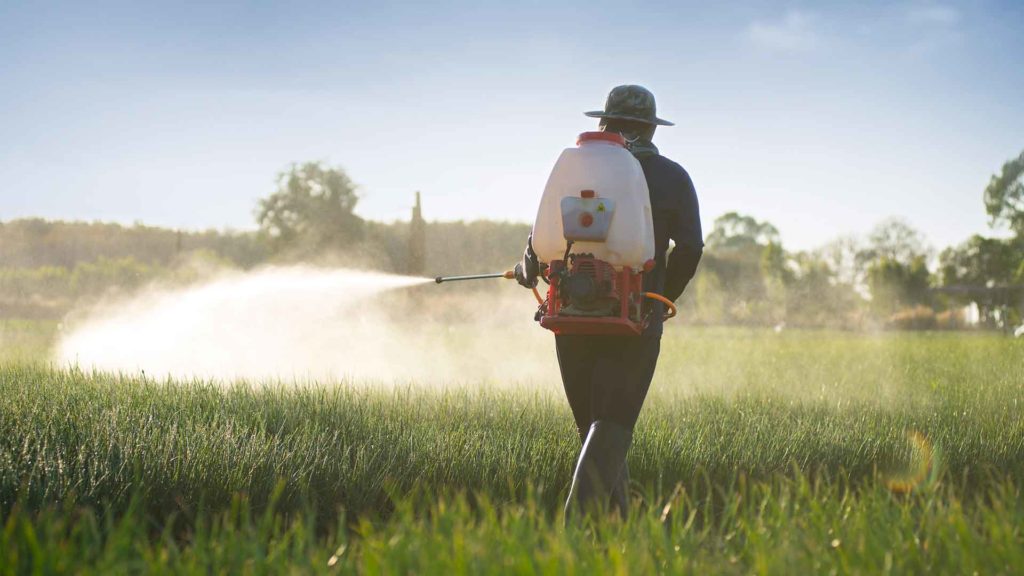Boron Carbon Footprint and Climate Change
Boron carbon footprint – A major problem in the world today is climate change and it has been a long-debated topic. Some people are convinced that it is not happening, while others think the world is doomed to an uninhabitable fate. The truth is that climate change is happening and we must reduce its impact on our lives. The Earth’s temperature has been increasing over time, and this will have a major impact on our planet.
In order to reduce the carbon footprint across production and manufacturing value chains*, partnerships are taking place with initiatives including renewable energy use, sustainable strategies, and innovative use of boron and borates. These types of collaborations may seem simple enough for big businesses to handle – but they actually have major implications for small business owners as well!
*Here, carbon footprint refer to the amount of CO² released into the environment and the value chains refer to the products and assets that a company decides to include in its business.

The Boron Carbon Footprint
Value chains, or the decision process of what product a company has chosen to produce, can have major impacts on both the world’s environment as well as our own lives! One way to manage the boron carbon footprint at home is to use renewable energy sources which can reduce dependency on fossil fuels which emit greenhouse gases into the atmosphere that contribute to climate change.
Low Carbon Economy
It refers to businesses and firms that reduce their carbon emissions by taking aggressive steps to reduce greenhouse gas (GHG) emissions through investments in clean energy, low-carbon fuel alternatives, renewable power sources, or other strategies which can be as follows-
– reduce CO² released into the environment by every means.
– producing the materials of a low carbon future.
– reduce company assets (products) produced that may cause the carbon emission to rise.
– reduce decisions made by the rich and powerful, instead go for the experts and professionals.
Paris Agreement
The Paris agreement (2016) is a global agreement that aims to tackle climate change. It has the long-term goal to limit the global average temperature rise to well below 2°C and pursue efforts to limit the temperature increase to 1.5°C above pre-industrial levels. The countries that signed the agreement are committed to keeping a check on global temperature rise by carbon footprints in the value chains and they also pledged efforts to limit carbon emissions, according to the European Union. However, not all countries have agreed with this legislation which is why it has been difficult for them to control carbon emissions.
Sustainable Strategies
In today’s society, it might seem like carbon footprints are inevitable because of how much we use energy in our daily lives. But, still, we are on our way to discover new avenues of energy to reduce our carbon footprints. One of the best ways is by adapting to sustainable development and lifestyle. Some of the sustainable strategies for value chains are:-
- Using the raw materials to the best of their efficiencies
- Reducing packaging materials
- keeping a check on the carbon emission in the supply chain
- Collaborating or working with the source suppliers that follow a sustainable strategy
- Advanced Planning and Scheduling Softwares
- Addressing and managing the risks and uncertainties of climate change
- Putting up emission and energy reduction targets along with tracking the progress
- Investing in low carbon technologies
One example of our carbon reduction efforts is through a process called “in situ carbonation”. The CO gas from this process can be captured and converted into usable carbon products or recycled for other purposes.
Decarbonization
Decarbonizing a material refers to lowering the amount or the intensity of carbon in it or by lowering the amount of greenhouse gas emissions (mainly carbon dioxide) produced by the burning of fossil fuels, hence freeing the global economy from these gases. The main purpose of the process is to keep a check on the global temperatures and to increase the use of renewable sources of energy like wind power, solar power, and biomass; working towards a cleaner planet, using the principle of sustainable development.
Reducing the carbon from the value chains, it is suggested to work with customers on steel decarbonization pathways and invest in technologies that could deliver reductions in steelmaking carbon intensity and in partnership to develop breakthrough technologies with the potential to deliver carbon neutral steelmaking pathways. The concept of decarbonization can be applied in enabling the production of zero-carbon aluminum as done by Rio Tinto.
In every industry using carbon and releasing emissions, it has become a need to consider decarbonization on the regular proceedings in the processes taking place. Taking all the alarming impacts into concern, alternate sources are being considered, such as solar power, wind power, etc. to come up with a tolerable future for the industry yet along with the process of decarbonization.
Renewable Energy
Renewable energy is carbon-free energy that is generated through many different sources such as hydro, wind, solar and geothermal. Renewable energies are also called the “energy of the future” because they can replace fossil fuels in a sustainable way without emitting carbon dioxide into the atmosphere.
A significant amount (about 25%) of electricity production comes from renewable sources like wind and solar.
The use of renewable energy sources can reduce carbon dioxide emissions by up to 150 gigatons per year, which is equivalent to two years worth of carbon dioxide pollution from all the cars on Earth. Renewable energies are cost-competitive with fossil fuels in many places around the world (including Canada) today.
To make the renewable sources of energy work efficiently and effectively, chemistry says we need the following five:-
Copper
Copper is found in wind turbines, which is the rotary engine where the kinetic energy of the moving wind is converted into electrical energy; in simple words, it is a source of renewable energy and is made up of copper alloy. Being the non-precious best conductor of heat and electricity, copper is the future for sustainability. In addition, it is used in smart technologies and the electrification of vehicles, which uses more copper than any traditional means being used widely.
Lithium
Lithium is the crucial element for battery technologies and for any renewable energy consumption, large batteries are the need. The system of high tension cables by which electrical power is distributed in a region is called a power grid system and with the renewable need with time, it needs huge batteries, which again needs lithium. The World Bank estimates the global demand for lithium will increase by 965% by 2050 to supply clean energy technologies.
Aluminum
Aluminum is one of the most energy-efficient and sustainable construction materials along with its perks of being corrosion-resistant, light reflection, insulation, and recyclability. Aluminum-intensive vehicles generate up to 17% lower carbon dioxide equivalent emissions over their life cycle, compared with baseline models, making aluminum a transportation efficient element, much needed in renewable sources to work.
Borates
Borates are salts or esters of boric acid. They are used in smart technologies and agriculture, with a perk of reducing the electric use domestically because of their insulating properties, keeping the houses warm in winters and cool in summers. Also, borates play a key role in renewable development as they’re the key ingredient in a type of light-emitting diode (LED) that can be powered by solar, wind, or hydro power. Borates are also found in our fire extinguishers and fertilizers. They help to reduce carbon emissions as well as limit climate change’s impact on livestock farming.
Titanium
Titanium is a light, strong, and grey lustrous, corrosion-resistant metallic element used in strong lightweight alloys and keeping renewable development as the concern, it is used in the development of low-cost metal powders which refers to powders used to make carbon-based materials like steel and carbon fiber also used for 3D printing and in the aerospace industry in order to create lighter aircraft removing the need to cast metal, reducing energy and waste.
Reducing carbon dioxide emissions means less carbon dioxide in the atmosphere and as a result, reducing global warming. For example, reducing carbon dioxide by half would decrease its atmospheric concentration to 350 ppm which is close to pre-industrial levels of 280 ppm, and thus avoid some of the impacts associated with climate change such as increased rates.
There are a variety of partnerships and agreements that have been established with the aim to reduce the carbon footprint from value chains which includes initiatives such as climate science, low carbon economy, etc. These might seem like things that are far in the future or not relevant to our daily lives, but they have a major impact on how we live and what will happen with climate change. This carbon-saving technology is also being used in the manufacture of new types of concrete.
The goal is to limit global warming to well below 2, preferably to 1.5 degrees Celsius, compared to pre-industrial levels. To achieve this long-term temperature goal, countries aim to reach global peaking of greenhouse gas emissions as soon as possible to achieve a climate-neutral world by mid-century.
A major problem in the world today is climate change and it has been a long-debated topic. Some people are convinced that it is not happening, while others think the world is doomed to an uninhabitable fate. The truth is that climate change is happening and we must reduce its impact on our lives. The Earth’s temperature has been increasing over time, and this will have a major impact on our planet.
In order to reduce the carbon footprint across company value chains, many partnerships are taking place worldwide with initiatives including low-carbon economies, renewable energy use, sustainable strategies, and decarbonization including innovative uses of boron and borates, to reduce the carbon footprint across value chains. These types of collaborations may seem simple enough for big businesses to handle – but they actually have major implications for small business owners as well!
Here, carbon footprints refer to the amount of CO² released into the environment and the value chains refer to the products and assets that a company decides to include in their business.
How to Reduce the Carbon Footprint
Value chains, or the decision process of what product a company has chosen to produce, can have major impacts on both the world’s environment as well as our own lives! One way to reduce your carbon footprint at home is to use renewable energy sources which can reduce your dependency on fossil fuels which emit greenhouse gases into the atmosphere that contribute to climate change.
Low Carbon Economy
It refers to businesses and firms that reduce their carbon emissions by taking aggressive steps to reduce greenhouse gas (GHG) emissions through investments in clean energy, low-carbon fuel alternatives, renewable power sources, or other strategies which can be as follows-
– reduce CO² released into the environment by every means.
– producing the materials of a low carbon future.
– reduce company assets (products) produced that may cause the carbon emission to rise.
– reduce decisions made by the rich and powerful, instead go for the experts and professionals.





